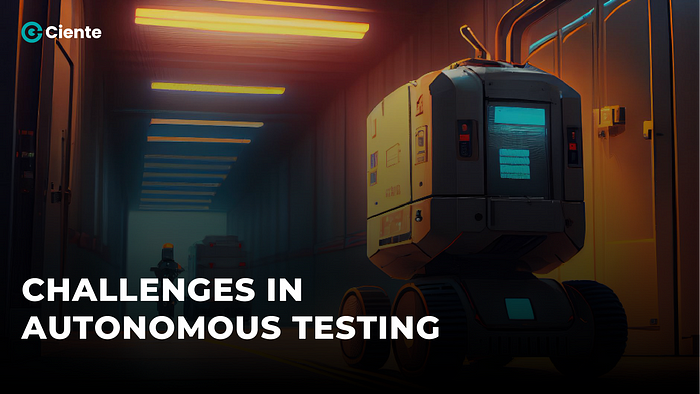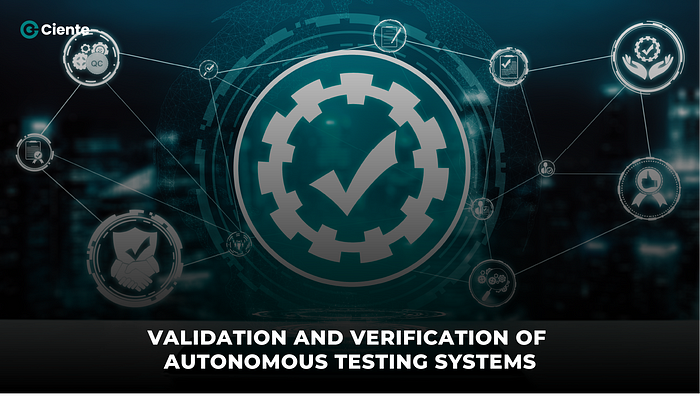 Website Copy Makeover – Turn Visitors into Buyers Instantly!
Website Copy Makeover – Turn Visitors into Buyers Instantly!
Unveiling the Advantages of Autonomous Testing: Revolutionizing Quality Assurance
Written by Team Ciente » Updated on: June 17th, 2025

In the fast-paced realm of software development, ensuring the quality, reliability, and efficiency of applications is paramount. With the advent of advanced technologies, the traditional manual testing approach is evolving into something more dynamic and efficient: Autonomous Testing. This innovative approach to Quality Assurance (QA) leverages the power of automation, artificial intelligence (AI), and machine learning to drive testing processes. In this blog, we delve into the myriad benefits of Autonomous Testing and how it's reshaping the landscape of QA.
Accelerated Testing Cycles
One of the most significant advantages of Autonomous Testing is its ability to expedite testing cycles dramatically. By automating repetitive tasks, executing tests in parallel, and leveraging AI-driven algorithms, Autonomous Testing systems can identify defects and performance issues swiftly. This acceleration in testing cycles translates to reduced time-to-market, enabling businesses to deliver high-quality software products more efficiently and stay ahead of the competition.
Enhanced Test Coverage and Accuracy
Autonomous Testing systems excel in providing comprehensive test coverage across various platforms, devices, and environments. Unlike manual testing, which is limited by human capacity and resources, Autonomous Testing can simulate real-world scenarios and user interactions with precision and consistency. This comprehensive approach ensures thorough testing of all aspects of the application, resulting in higher accuracy, fewer defects, and improved overall quality.
Cost Savings and Increased ROI
While the initial investment in implementing Autonomous Testing may seem daunting, the long-term cost savings are substantial. By reducing the need for manual intervention, minimizing defects early in the development cycle, and streamlining testing processes, Autonomous Testing helps organizations mitigate the risk of costly rework and regression testing. This, in turn, leads to a higher return on investment (ROI) and greater cost-effectiveness over time.
Improved Productivity and Resource Utilization
With Autonomous Testing handling repetitive and time-consuming tasks, QA teams can focus their efforts on more strategic activities such as test planning, analysis, and optimization. This shift in focus improves productivity, maximizes resource utilization, and empowers QA professionals to deliver greater value to the organization. Additionally, by automating routine tasks, Autonomous Testing frees up valuable human resources, enabling teams to allocate their time and expertise more efficiently.
Agility and Scalability
In today's dynamic business landscape, agility and scalability are essential for staying competitive. Autonomous Testing offers unparalleled agility by enabling rapid adaptation to changing requirements, environments, and user demands. Moreover, its scalability allows organizations to scale testing efforts seamlessly to accommodate growing application complexity and user base. Whether it's scaling up to handle increased workload or scaling down during periods of low demand, Autonomous Testing provides the flexibility needed to meet evolving business needs.
Conclusion
As technology continues to evolve, Autonomous Testing stands at the forefront of innovation in Quality Assurance. By harnessing the power of automation, AI, and machine learning, organizations can unlock unprecedented levels of efficiency, accuracy, and scalability in their testing processes. From accelerated testing cycles and enhanced test coverage to cost savings and improved productivity, the benefits of Autonomous Testing are clear and compelling.
As businesses embrace the advantages of Autonomous Testing, they position themselves for success in an increasingly competitive landscape. By investing in the right tools, technologies, and expertise, organizations can elevate their QA capabilities, drive continuous improvement, and deliver superior software products that delight users and drive business growth. The future of Quality Assurance is autonomous, and the time to embrace it is now.
Note: IndiBlogHub features both user-submitted and editorial content. We do not verify third-party contributions. Read our Disclaimer and Privacy Policyfor details.
Copyright © 2019-2025 IndiBlogHub.com. All rights reserved. Hosted on DigitalOcean for fast, reliable performance.














